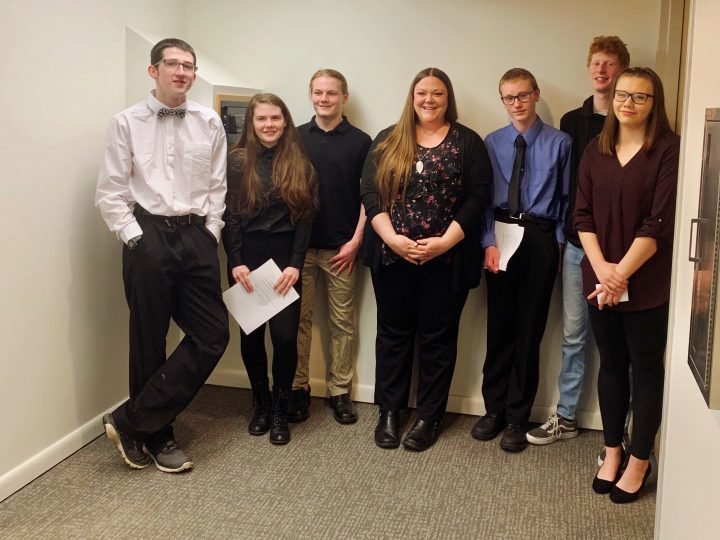 By Jami Makan
By Jami Makan Six Blaine High School biology students presented their research on Cain Creek to Blaine City Council on Monday, March 11.
The Grade 9 students did research on the riparian area of Cain Creek – the area on the banks of the stream – and found that about 88 percent of the organisms growing there are invasive species. They also found that there is relatively low biodiversity in this area.
There is no equivalent research out there, said Jennifer Wright, Grade 9 biology teacher at Blaine High School.
“This was college-level work,” said Wright. “It’s pretty amazing what this small group of students has done, and it has been wonderful to see their ownership and to watch them grow.”
The six students – Rhyan Fuks, Aiden Holley, Tommy Stiles, Isabelle Creelman, Jack Cheatham and Deryck Whitehead – were invited to present their work to Blaine City Council on Monday.
Their research focused on the ecological health of the riparian area of Cain Creek, which is important because it’s where birds and other animals tend to congregate. The research found that around the creek, 87.6 percent of the organisms growing there are invasive species as opposed to native species. “Most of what’s growing there is not naturally a part of the ecosystem that should be there,” explained Wright.
In addition, the students’ research found that the biodiversity index was just 0.004, compared to about 0.08 for Lincoln Park. Ecosystems are healthier when the index is closer to 1.
“Having the numbers really kind of changes how the students see it, because when you have the numbers, it makes it more dramatic, rather than just looking at the creek,” said Wright. “Now they are really motivated to help and do more.”
At Monday’s meeting, the students asked city council to continue to support their restoration work in Cain Creek. This work consists of removing invasive plants, putting down mulch and planting native species of plants. Previously, the city has arranged to provide some plants for this restoration work.
“They are making a contribution to the city that they live in, and that’s important to me in addition to the science,” said Wright.
Comments
No comments on this item Please log in to comment by clicking here